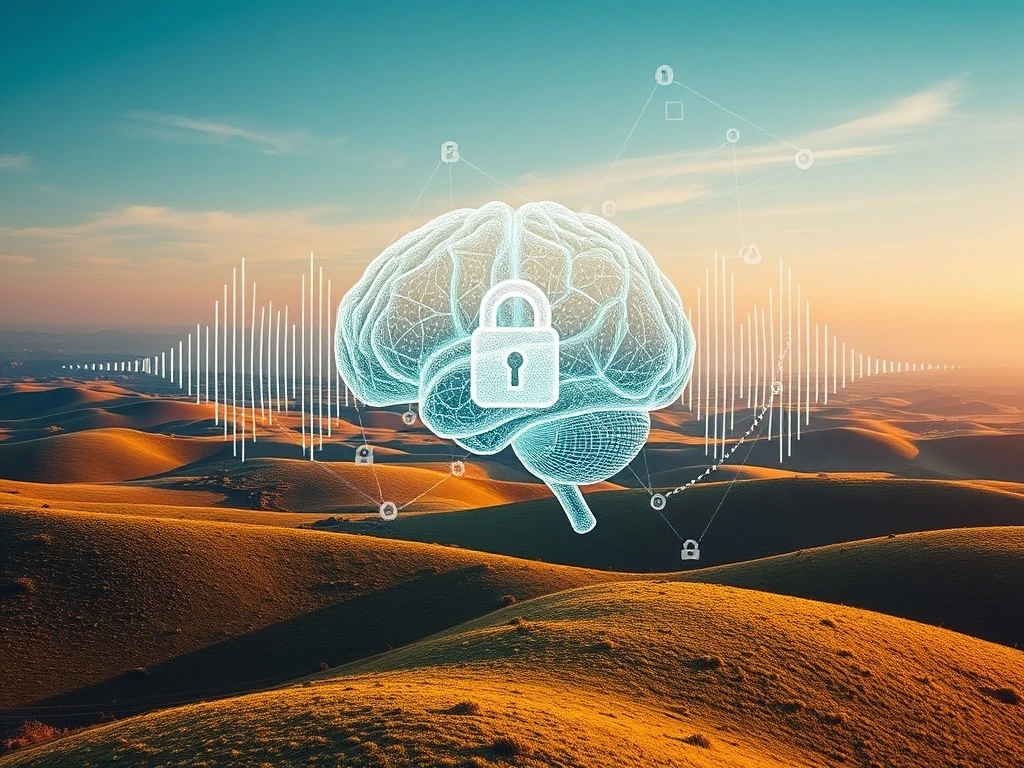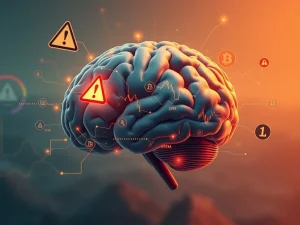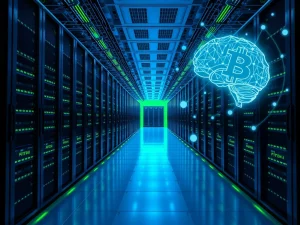Urgent Warning: AI Voice Clone Threatens Global Banking Fraud Crisis

Imagine a world where your voice, or even your face, can be perfectly mimicked by artificial intelligence, then used to drain your bank account. For those navigating the fast-paced world of cryptocurrency, where sophisticated scams are unfortunately common, this threat hits particularly close to home. OpenAI CEO Sam Altman has issued a stark warning to the Federal Reserve: AI voice clone technology is rapidly advancing, posing an imminent risk of a global banking fraud crisis.
The Alarming Rise of AI Voice Clone Technology: Are Your Funds Truly Safe?
During a recent Federal Reserve conference, Sam Altman delivered a sobering message. He cautioned that AI-driven voice-mimicking software is now sophisticated enough to trigger a widespread “fraud crisis” in banking “very, very soon.” Speaking alongside Fed Governor Michelle Bowman, Altman highlighted the critical vulnerability of traditional voice authentication systems. These systems, which often require users to repeat a phrase for identity verification, are becoming obsolete. Modern AI can generate convincing voice clones from minimal audio samples, effectively “fully defeat[ing]” such security measures, as Altman noted [1].
This isn’t a hypothetical future; it’s a present danger. Attackers can leverage AI to impersonate customers over the phone, bypassing security checks and siphoning funds. Even if companies like OpenAI restrict access to advanced voice-cloning tools, the technology’s growing accessibility means “some bad actor is going to release it,” making widespread misuse inevitable [1].
Beyond Voice: How Deepfake Technology Escalates the Financial Threat
The danger extends beyond just voice. Altman also warned about “video clones,” which could enable hyper-realistic AI-generated FaceTime calls. This evolution further erodes trust in digital identity verification. “Right now it is a voice call. Soon it is going to be a video FaceTime,” he stated, emphasizing the urgent need to update authentication protocols [1]. This broader category of deepfake technology presents an unprecedented challenge to financial institutions and individuals alike.
The ease with which non-experts can now exploit these tools means the conversation around AI security is no longer theoretical. The next frontier of video clones will complicate identity verification further, necessitating rapid advancements in detection technologies and regulatory frameworks.
A United Front: The Federal Reserve and OpenAI Tackle AI Security Challenges
Recognizing the gravity of the threat, Fed Governor Michelle Bowman signaled openness to collaboration, stating, “That might be something we can think about partnering on” [1]. This proactive engagement from the Federal Reserve aligns with its broader efforts to address AI risks in the financial sector, particularly as generative AI becomes more integrated into regulated industries.
OpenAI has already begun fostering such partnerships. The company plans to expand its physical presence in Washington, D.C., with a new office designed to host policy workshops and provide training for regulators and banks on AI deployment, according to a CNBC report [1]. This initiative aims to bridge the gap between rapid technological advancements and the often slower pace of updating security infrastructure. The goal is to develop robust AI security solutions that can detect synthetic voices and video deepfakes, safeguarding financial transactions.
Strengthening Financial Security in an AI-Driven World: What Can Be Done?
Altman’s remarks highlight a critical tension: “Just because we are not releasing the technology does not mean it does not exist,” he cautioned, reflecting concerns about the unregulated spread of deepfake tools [1]. While some institutions have transitioned to multi-factor authentication, many still rely on vulnerable voice-based verification, leaving them exposed to AI-powered attacks.
To enhance financial security, a multi-pronged approach is essential:
- Advanced Authentication: Banks must move beyond simple voice verification to robust multi-factor authentication (MFA) systems, incorporating biometrics, hardware tokens, and behavioral analysis.
- AI-Powered Detection: Implementing AI-driven solutions capable of distinguishing between human and synthetic voices/videos is crucial. These systems need to evolve as quickly as the threat.
- Cross-Sector Collaboration: Ongoing dialogue and partnership between tech innovators like OpenAI, financial institutions, and regulatory bodies like the Fed are vital to develop shared standards and best practices.
- Public Awareness: Educating the public about the risks of deepfakes and the importance of verifying identity through multiple channels is paramount.
- Regulatory Frameworks: Governments and regulatory bodies must establish clear guidelines and frameworks for the ethical development and deployment of AI, while also addressing the misuse of such technologies.
The accessibility of voice-cloning tools means even non-experts can exploit them, heightening risks for individuals and institutions. The Fed’s willingness to engage with tech leaders like Altman signals recognition of the cross-sector collaboration required to address these challenges. OpenAI’s Washington office is poised to play a pivotal role in bridging research and policy, yet the central bank’s involvement also raises questions about balancing innovation with oversight as AI tools become ubiquitous in financial transactions.
Conclusion: A Call to Action for a Secure Digital Future
The warning from OpenAI and the Federal Reserve is a wake-up call. The era of sophisticated AI-powered fraud is not a distant threat but an immediate challenge that demands a coordinated, proactive response. Protecting our financial systems and individual assets requires continuous innovation in AI security, robust regulatory frameworks, and widespread public awareness. By embracing advanced authentication methods and fostering strong partnerships between technology, finance, and government, we can build a more resilient defense against the evolving landscape of digital deception and ensure the integrity of our financial future.
Frequently Asked Questions (FAQs)
1. What is an AI voice clone?
An AI voice clone is an artificial intelligence-generated replica of a person’s voice. Advanced AI software can analyze minimal audio samples of a person’s speech and then synthesize new speech in that person’s voice, making it sound highly realistic and virtually indistinguishable from the original.
2. How can AI voice clones lead to banking fraud?
AI voice clones can be used by fraudsters to impersonate legitimate customers during phone calls to banks or financial institutions. By mimicking a customer’s voice, criminals can bypass legacy voice authentication systems, gain unauthorized access to accounts, change passwords, or initiate fraudulent transactions, leading to significant financial losses.
3. What are deepfakes, and how do they relate to this threat?
Deepfakes are synthetic media in which a person in an existing image or video is replaced with someone else’s likeness using AI. While AI voice clones are a form of audio deepfake, the term also encompasses video deepfakes, where a person’s face and expressions can be digitally altered or created. This technology relates to the banking fraud threat as it can extend beyond voice calls to hyper-realistic video calls (like FaceTime), making identity verification even more challenging.
4. What steps are being taken to combat AI voice clone fraud?
Key steps include collaboration between tech companies (like OpenAI) and financial regulators (like the Federal Reserve) to develop new detection technologies and policy frameworks. Banks are urged to adopt multi-factor authentication (MFA) and AI-driven solutions that can detect synthetic voices and videos. OpenAI is also establishing a presence in Washington D.C. to educate regulators and banks on AI deployment and risks.
5. How can individuals protect themselves from AI-powered scams?
Individuals should be highly skeptical of unusual requests, especially those involving money, even if the voice or video seems familiar. Always verify identity through a separate, trusted channel (e.g., call back on a known number). Enable multi-factor authentication on all financial accounts. Stay informed about the latest scam tactics and report suspicious activity immediately to your bank and relevant authorities.
6. Why is the Federal Reserve involved in AI security discussions?
The Federal Reserve, as a central bank, is responsible for maintaining financial stability and overseeing the banking system. The rapid advancement of AI and its potential for widespread banking fraud poses a systemic risk to financial stability. Therefore, the Fed is actively engaging with tech leaders to understand these risks and explore preemptive actions and collaborative solutions to protect the financial sector.









